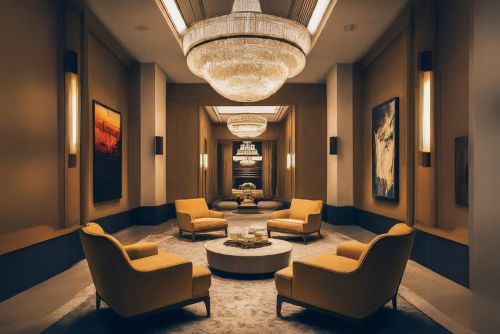
Imagine stepping into your hotel room after a long day of travel. You yearn for a space that both invigorates and soothes you. But instead, you're met with dim lighting that casts long shadows and strains your eyes. This, unfortunately, is a common scenario for many travelers. But what if your hotel room could be an oasis of hotel lighting, designed to enhance your mood, functionality, and overall experience?
While often overlooked, hotel room lighting plays a crucial role in guest satisfaction. Poor lighting can leave guests feeling frustrated, and tired, and even affect their perception of the room's size and decor. On the other hand, a well-lit hotel room creates a welcoming ambiance, promotes relaxation or productivity as needed, and showcases the hotel's design aesthetic.
Let's delve deeper into the world of hotel lights, exploring common pitfalls, the power of purposeful lighting, and how both hoteliers and guests can unlock their potential.
Understanding Common Hotel Lighting Woes
Why is hotel room lighting so often an issue? Several factors contribute to this:
- Cost-cutting measures: Hotels might prioritize energy-efficient bulbs over providing adequate illumination levels.
- Lack of design consideration: Lighting design may not be a focal point during the initial planning stages, leading to a one-size-fits-all approach that fails to cater to diverse guest needs.
- Misunderstanding guest needs: Guesthouses might underestimate the importance of bright task lighting for activities like reading or working, or the calming effect of warm lighting for relaxation.
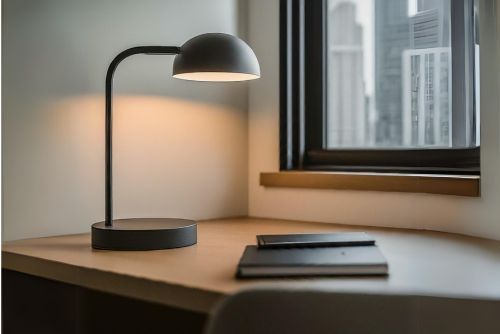
These factors can lead to dim, monotonous lighting that fails to meet the needs of a modern traveler. Some guesthouses might justify dim lighting by aiming to create a romantic ambiance, but this approach often falls flat. Additionally, the idea that dim lighting encourages guests to spend money in restaurants and bars lacks concrete evidence.
How to Brighten a Hotel Guestroom?
Even if a hotel room isn't ideally lit, there are ways for guests to take control:
- Identify and utilize existing lighting controls: Look for dimmer switches to adjust the overall light level. Many rooms have bedside lamps or reading lamps that can be used for task lighting.
- Strategically place luggage: Avoid blocking windows or lamps with your luggage to maximize natural and artificial light.
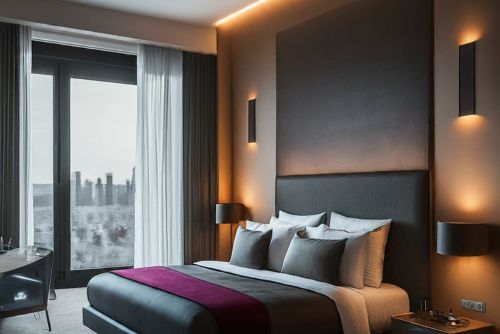
The Power of Purposeful Hotel Lighting: Unveiling the Three Layers
To create a truly exceptional guest experience, hotels should embrace the concept of hotel lighting design with multiple layers:
- Ambient Lighting: This sets the overall mood and provides basic illumination. Common fixtures include chandeliers, recessed lighting, and wall-mounted lights. Dimmers and the choice between warm or cool lighting allow guests to personalize the ambiance.
- Task Lighting: This focuses on specific areas to aid guests with activities like reading, working, or applying makeup. Examples include desk lamps, bedside lamps, and makeup vanity lighting.
- Accent Lighting: This adds depth and drama by highlighting design elements like artwork, architectural features, or decorative objects. Recessed spotlights, picture lights, and tabletop accent lamps are popular choices.

Mastering the Three Layers of Hotel Room Lighting
Hotel lighting suppliers offer a vast array of fixtures to cater to each layer. Here's a closer look:
Ambient Lighting:
- Chandeliers: When used thoughtfully, chandeliers can add a touch of elegance and provide ample light.
- Recessed lighting: This is a versatile option that offers even illumination throughout the room.
- Wall sconces: These provide indirect lighting, creating a softer ambiance.
Task Lighting:
- Desk lamps: Adjustable desk lamps are ideal for working guests.
- Bedside lamps: Essential for reading in bed, with adjustable arms for optimal positioning.
- Makeup vanity lighting: Bright and focused lighting is crucial for applying makeup.
Accent Lighting:
- Recessed spotlights: These can be strategically placed to highlight artwork or architectural details.
- Picture lights: Mounted above artwork, these provide targeted illumination.
- Tabletop accent lamps: These add a decorative touch while providing focused illumination.
Canadian hotel supply companies like Winsham and Winsham Hotel Supplies Edmonton offer a wide variety of hotel lighting fixtures to suit any design concept.
Beyond the Room: Exploring Hotel Lighting Design Outdoors
Hotel lighting design extends beyond the guest room. Outdoor lighting can showcase landscaping features, architectural details of the hotel exterior, and signage. This not only enhances the property's aesthetics but also improves security and guest wayfinding.
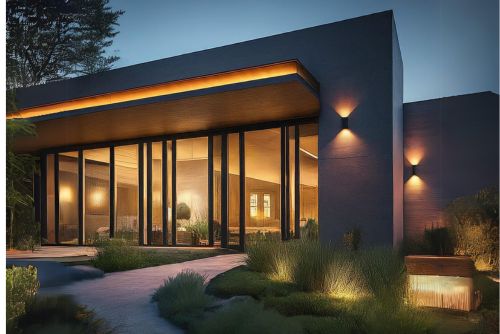
How design inspiring hospitality lighting using the best resources available?
Successful hotel lighting design utilizes layered lighting to create a welcoming environment. This includes ambient lighting for overall illumination, task lighting for specific needs like reading, and accent lighting to highlight design features. Canadian hospitality lighting design firms excel at crafting illumination plans specific to each hotel's unique needs.
How Does Lighting Design Shape the Ambiance of Public Areas in Hotels?
From sleek wall lights bathing lobby areas in a warm glow to dramatic pendant lights creating a focal point in public areas, lighting design plays a crucial role in shaping the ambiance of hotels across North America. Interior designers are constantly pushing boundaries with innovative solutions that elevate the guest experience. Hotel brands, from established giants like Hilton to trendy new players, are recognizing the power of lighting in their hotel design. Whether it's pendant luminaires casting a sophisticated air over a business meeting in a public space of a London hotel or unique brass light fixtures accenting a vibrant Dubai lobby, the specifications - from wattage and lumens to overall layout - are carefully considered to create a lasting impression.
A Guide for Hoteliers and Guests
Guest Experience: Remember, well-designed hotel room lighting is an investment in guest satisfaction. By creating a space that caters to their needs and preferences, they can significantly enhance the overall guest experience, leading to positive reviews and repeat business.
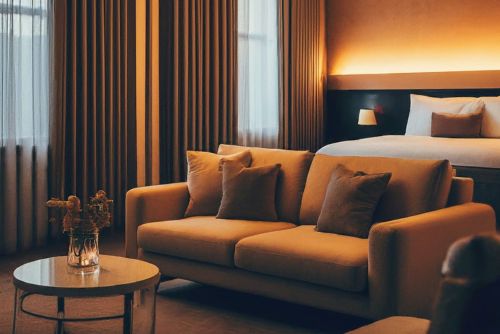
Hotelier's Toolkit: Here's a practical guide for hoteliers to create a well-lit guest experience:
- Consider guest needs and preferences: Conduct surveys or focus groups to understand what guests desire in terms of lighting.
- Invest in high-quality, functional, and stylish fixtures: Cheap fixtures can malfunction and detract from the overall ambiance. Choose lighting that complements the hotel's design aesthetic while providing adequate light levels.
- Embrace dimmable lighting and a variety of color temperatures: This empowers guests to personalize the lighting to suit their needs.
Guest Empowerment: Even in a less-than-ideally lit room, guests can take control:
- Utilize existing lighting controls: Look for dimmers, bedside lamps, and reading lamps.
- Request additional lighting: Politely inquire at the front desk if additional lamps are available.
The Future of Hotel Room Lighting: Innovation and Trends
The future of hotel room lighting is brimming with exciting possibilities:
- Smart lighting systems: These allow guests to control lighting from their smartphones, customizing the ambiance and maximizing energy efficiency.
- Sustainable lighting solutions: LED lighting offers significant energy savings while providing excellent light quality.
- Biophilic design principles: This incorporates natural light and elements that mimic nature to create a calming and restorative environment.
Hoteliers: Invest in well-lit guest rooms. It's a cost-effective way to enhance the guest experience, leading to increased satisfaction, positive reviews, and ultimately, higher revenue.
Guests: Empower yourself to create a more comfortable guesthouse stay by taking control of the lighting options available.
Now you possess the knowledge to transform any hotel room into a haven of comfort and functionality, bathed in the perfect light for your needs. So, the next time you step into a hotel room, take a moment to appreciate the hotel lighting design, and if necessary, use the tips and resources provided to create your own personal lighting oasis.
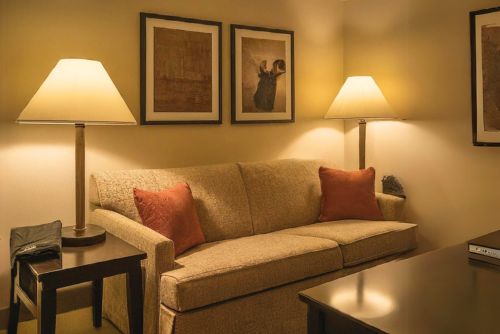
FAQs: Illuminating Your Hotel Room Experience
Here are some frequently asked questions to shed light on the art of hotel room lighting:
Q: Why do hotel rooms have dim lights?
Step into a dimly lit hotel room, and you might wonder if it's by design or simply an oversight. The truth is, there can be a few reasons behind this lack of brightness. Sometimes, hotels prioritize cost-cutting measures, opting for energy-efficient bulbs that sacrifice light intensity for lower electricity bills. In other cases, the design process might not give enough thought to lighting, leading to a uniform approach that doesn't cater to the different needs guests have throughout their stay. Additionally, some hotels might misinterpret guest preferences, prioritizing a romantic ambiance over functionality. While dim lighting can be a turn-on for some, it can leave many guests squinting while trying to read or work.
Q: How to brighten a hotel room?
Even if you find yourself in a room bathed in a somewhat underwhelming glow, there are ways to take control and brighten your space. First, check for dimmer switches. Many hotels incorporate them to allow guests to adjust the overall light level to their preference. Additionally, keep an eye out for bedside lamps or reading lamps – these can be lifesavers when you need a concentrated pool of light for reading or working. Strategically placing your luggage around the room can also make a difference. By avoiding blocking windows or lamps, you can maximize the natural and artificial light available. Finally, if none of these solutions prove sufficient, don't hesitate to politely inquire at the front desk. Some hotels might have additional lamps available to lend a helping hand in brightening your stay.
Q: What is the standard lighting for a hotel room?
There isn't a single, universally accepted "standard" for hotel room lighting. However, a well-designed lighting plan moves away from a one-size-fits-all approach and embraces a layered strategy. Imagine this lighting plan as a three-act play:
- Act 1: Ambient Lighting sets the stage. This layer provides the general illumination for the entire room, typically around 30-foot candles (a unit of measurement for illuminance). Think recessed lighting in the ceiling or strategically placed sconces on the walls.
- Act 2: Task Lighting takes center stage when you need to focus on specific activities. Reading a book in bed? A bedside lamp with adjustable arms provides a pool of light exactly where you need it (around 50-foot candles on the work surface). Working on your laptop at the desk? A dedicated desk lamp ensures you have the illumination to conquer your tasks.
- Act 3: Accent Lighting adds the finishing touches. This layer isn't about overall brightness; it's about highlighting design elements. Recessed spotlights might showcase a beautiful painting, while picture lights can illuminate artwork hanging on the wall. Tabletop accent lamps can add a touch of decorative flair while providing a gentle pool of light in a specific corner.
By incorporating these different layers of hotel lighting fixtures, a well-designed lighting plan caters to diverse guest needs and creates a comfortable, functional, and visually interesting space.
Q: Why is lighting important in a hotel room?
The impact of hotel lighting design goes far beyond simply illuminating a space. It plays a significant role in shaping the guest experience. Let's explore how:
- Guest mood and comfort: Lighting can significantly influence how guests feel in a hotel room. Warm lighting can promote relaxation and create a calming atmosphere, while cooler lighting can energize guests and help them focus on tasks. By offering adjustable lighting options, hotels empower guests to create an environment that suits their moods and needs.
- Functionality for various activities: Adequate lighting is essential for guests to comfortably engage in different activities during their stay. Reading a book in bed requires a different level of illumination compared to applying makeup or working on a laptop at the desk. A well-designed lighting plan incorporates task lighting options that cater to these diverse needs.
- Perception of room size and decor: The way a room is lit can significantly impact how guests perceive its size and overall design aesthetic. Strategic lighting placement can make a smaller room feel more spacious while highlighting architectural details or artwork with accent lighting can elevate the perceived value of the space.
In short, hotel room lighting is a silent but powerful force that shapes the guest’s experience. By prioritizing thoughtful lighting design, hotels can create a space that not only looks good but also feels comfortable, functional, and inviting.
Q: Why is bedroom lighting important?
When it comes to hotel rooms, the importance of lighting is amplified in the bedroom area. This is your sanctuary after a long day of exploring or working. Here's why bedroom lighting deserves special attention:
- Promoting relaxation and sleep: Warm lighting helps signal to the body that it's time to wind down and prepare for sleep. Harsh overhead lighting can disrupt this natural process, making it harder to fall asleep and stay asleep. By offering bedside lamps with warm-toned bulbs or dimmable lighting options, hotels empower guests to create a calming environment conducive to restful sleep.
- Enabling guests to unwind and recharge: The ability to adjust lighting allows guests to personalize their pre-sleep routine. Want to curl up with a book before bed? A bedside lamp with adjustable arms provides the perfect pool of light for reading without disturbing your partner. Need a touch of light to navigate the room at night? A low-level nightlight can offer subtle illumination without disrupting sleep patterns.
In essence, well-designed bedroom lighting allows guests to create a personalized sleep sanctuary. This not only contributes to a better night's rest but also enhances the overall feeling of relaxation and rejuvenation during their stay.

